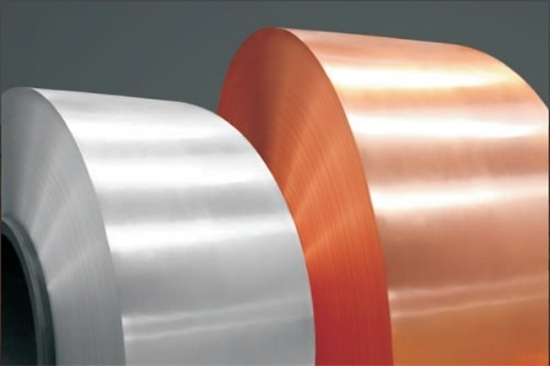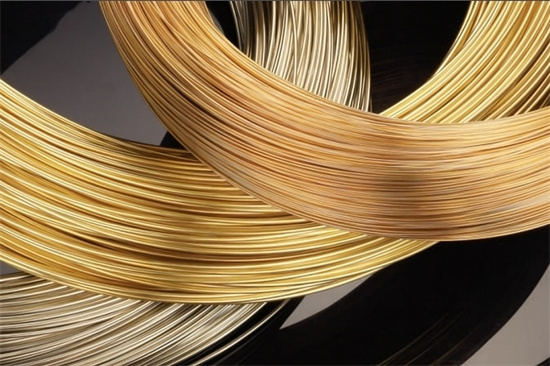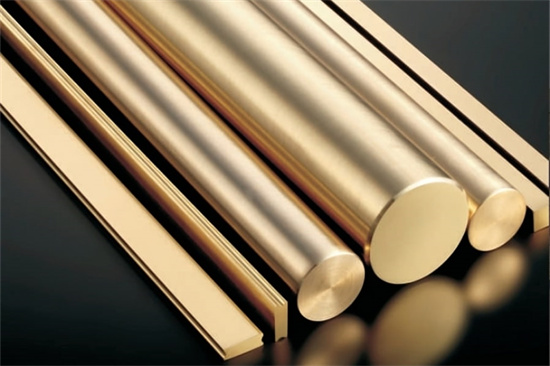


CuZn15: The Brass Alloy Perfect for Decorative Metalwork
Low MOQ
Provide low minimum order quantity to meet different needs.
OEM & ODM
Provide customized products and design services to meet unique customer needs.
Adequate Stock
Ensure fast order processing and provide reliable and efficient service.
Customer Satisfaction
Provide high quality products with customer satisfaction at the core.
share this article
Table of Contents
When it comes to selecting the right brass alloy for your project, CuZn15 stands out as a unique and versatile option. With its blend of 85% copper and 15% zinc, CuZn15 offers a balance of strength, formability, and corrosion resistance, making it an ideal choice for a wide range of applications. But what exactly sets CuZn15 apart from other brass alloys? Why is it such a popular choice in industries like plumbing, electronics, and architecture?
In this comprehensive guide, we’ll dive deep into everything you need to know about CuZn15, including its composition, properties, applications, and more. Whether you’re an engineer looking for the best material for a particular project or simply curious about this alloy, this guide will provide clear, detailed information to help you understand the unique characteristics of CuZn15.
Overview
CuZn15, also known by its UNS designation C23000, is a low-zinc brass alloy that is particularly known for its excellent cold-working properties and good corrosion resistance. The alloy’s composition of 85% copper and 15% zinc gives it a golden-yellow color, which makes it not only functional but also aesthetically appealing.
One of the standout features of CuZn15 is its high ductility, which allows it to be easily formed into a variety of shapes without cracking or losing strength. This makes it ideal for applications that require deep drawing, bending, and forming. Additionally, CuZn15 has good corrosion resistance, especially in freshwater and mild atmospheric environments, making it a common choice for plumbing and decorative items.
Key Features :
- High formability: it can be easily cold-worked into complex shapes.
- Corrosion resistance: Particularly resistant in freshwater and mildly corrosive environments.
- Aesthetic appeal: Its bright, golden-yellow color makes it ideal for decorative applications.
- Moderate strength: Offers a balance of strength and ductility, making it suitable for a wide range of uses.
- Cost-effective: Compared to higher copper-content brasses, It is more affordable while still offering great performance.
Composition and Properties
The unique blend of 85% copper and 15% zinc in CuZn15 gives it a range of desirable properties, including good strength, ductility, and corrosion resistance. Below, we provide a detailed breakdown of CuZn15’s composition and the impact each element has on its overall performance.
Chemical Composition
| Element | Percentage (%) |
|---|---|
| Copper (Cu) | 84.0 – 86.0 |
| Zinc (Zn) | Balance (~14.0 – 16.0) |
| Lead (Pb) | ≤ 0.05 |
| Iron (Fe) | ≤ 0.05 |
| Other elements | Trace amounts |
This composition gives CuZn15 its distinctive golden color and contributes to its excellent mechanical properties. The zinc content helps to increase strength and durability, while the high copper percentage ensures good corrosion resistance and workability.
Mechanical and Physical Properties
| Property | Value |
|---|---|
| Tensile Strength | 250 – 320 MPa |
| Yield Strength | 100 – 150 MPa |
| Elongation | 50 – 60% |
| Density | 8.70 g/cm³ |
| Hardness | 50 – 80 HB |
| Thermal Conductivity | 130 W/m·K |
| Electrical Conductivity | 30% IACS |
| Melting Point | 900 – 930°C |
Applications
CuZn15’s unique combination of strength, workability, and corrosion resistance makes it an ideal material for a wide range of applications. From plumbing to electronics and decorative items, it is used across many industries. Below, we’ll explore some of the most common uses for this brass alloy and why it’s so popular in these specific fields.
Common Applications
| Industry | Typical Applications |
|---|---|
| Plumbing | Tubing, faucets, valves, and fittings |
| Architecture | Decorative panels, door handles, and fixtures |
| Electrical | Connectors, terminals, and conductors |
| Automotive | Radiator cores, fuel system components, and gaskets |
| Jewelry/Ornaments | Chains, rings, brooches, and decorative pieces |
| Musical Instruments | Brass wind instruments, bells, and cymbals |
Why CuZn15 is Ideal for These Applications:
- Plumbing: CuZn15’s corrosion resistance makes it an excellent material for plumbing systems, especially in freshwater environments where it resists tarnishing and oxidation.
- Architecture: The bright yellow color and formability of CuZn15 make it perfect for decorative metalwork in buildings, adding both beauty and durability to fixtures like door handles and panels.
- Electrical Components: CuZn15’s moderate electrical conductivity combined with its corrosion-resistant properties make it a suitable material for electrical connectors and terminals.
- Automotive Applications: CuZn15’s thermal conductivity and resistance to corrosion make it useful in radiator cores and gaskets, where both heat dissipation and durability are required.
- Jewelry and Ornaments: CuZn15’s golden color and easy workability make it a popular choice for jewelry, allowing artisans to create intricate designs that maintain both beauty and strength.
- Musical Instruments: It is used in brass instruments like trumpets and saxophones due to its excellent acoustic properties and shiny appearance.
Specifications, Sizes, and Standards
When choosing CuZn15 for a specific project, it’s important to be aware of the available sizes, grades, and standards that govern its use. Below, we break down some of the most common specifications, sizes, and international standards that apply to CuZn15.
Common Standards and Sizes
| Standard | Description |
|---|---|
| ASTM B36 | Specification for brass plates, sheets, and strips |
| EN 1652 | European standard for copper and copper alloys in strip form |
| DIN 17660 | German standard for brass alloys for general use |
| JIS H3250 | Japanese standard for brass plates and strips |
| ISO 431 | International standard for brass alloy compositions |
Available Forms and Sizes
| Form | Size Range |
|---|---|
| Rods | Diameter: 5 mm to 100 mm |
| Sheets/Plates | Thickness: 0.5 mm to 50 mm |
| Tubes | Diameter: 6 mm to 150 mm |
| Wires | Diameter: 0.5 mm to 10 mm |
Custom Size Availability:
Many suppliers offer custom sizes for CuZn15 to meet specific project needs. If your project requires a specific dimension or form, it’s always a good idea to inquire about custom cuts, shapes, and finishing options from your supplier.
Suppliers and Pricing
The cost and availability of CuZn15 can vary depending on factors such as market demand, order quantity, and supplier location. Here is a breakdown of some typical suppliers and the associated pricing for CuZn15.
Suppliers and Pricing
| Supplier | Location | Price Range (per kg) | Lead Time |
|---|---|---|---|
| KME Germany | Germany | $8 – $12 | 2-4 weeks |
| Aviva Metals | USA | $9 – $13 | 1-3 weeks |
| Shanghai Metal Corporation | China | $7 – $11 | 3-5 weeks |
| Smiths Metal Centres | UK | £7 – £11 | 1-2 weeks |
Factors Influencing CuZn15 Pricing:
- Market Conditions: The prices of copper and zinc can fluctuate based on global demand, which will affect the cost of CuZn15.
- Order Size: Bulk orders typically come with volume discounts, while smaller quantities may be priced higher per kilogram.
- Custom Processing: Any custom cutting, shaping, or finishing may increase the overall cost of the material.
- Shipping Costs: Depending on your location, international shipping could add significantly to the price of CuZn15, particularly for large or heavy orders.
Advantages and Limitations
Like any material, CuZn15 has its advantages and limitations. Understanding these will help you determine whether this brass alloy is the best fit for your project.
Advantages and Limitations
| Advantages | Limitations |
|---|---|
| Excellent formability: Can be easily cold-worked into complex shapes, making it ideal for decorative and functional uses. | Moderate strength: While it is strong, it is not suitable for high-stress applications where greater tensile strength is required. |
| Corrosion resistance: Performs well in freshwater environments and mild atmospheric conditions. | Not suitable for marine environments: It may corrode more quickly in saltwater or highly corrosive industrial environments. |
| Aesthetic appeal: The bright yellow finish is ideal for decorative applications such as jewelry and architectural details. | Lower machinability: Compared to leaded brasses, it is more difficult to machine, which can increase production costs in certain applications. |
| Cost-effective: Offers a good balance between performance and price, making it an affordable option for a variety of applications. | Electrical conductivity: While it offers decent conductivity, it is less efficient than purer copper alloys, limiting its use in high-performance electrical applications. |
Comparing CuZn15 with Other Brass Alloys
When choosing a brass alloy for your project, it’s important to compare CuZn15 with other available options to ensure it meets your needs. Below, we compare CuZn15 with some other common brass alloys to highlight the differences in formability, corrosion resistance, and cost.
CuZn15 Compared to Other Brass Alloys
| Alloy | CuZn15 | CuZn30 | CuZn37 | CuZn39Pb3 |
|---|---|---|---|---|
| Tensile Strength | 250 – 320 MPa | 300 – 500 MPa | 300 – 450 MPa | 300 – 450 MPa |
| Formability | Excellent | Good | Moderate | Moderate |
| Corrosion Resistance | Good | Good | Moderate | Moderate |
| Machinability | Moderate | Moderate | Good | Excellent |
| Aesthetic Appeal | High | High | Moderate | Moderate |
Key Comparisons:
- CuZn15 vs. CuZn30: CuZn30 has higher tensile strength compared to CuZn15, making it better suited for applications that require more mechanical strength. However, CuZn15 offers better formability and is a more cost-effective solution for decorative and low-stress applications.
- CuZn15 vs. CuZn37: CuZn37, with its higher zinc content, offers better machinability but is less corrosion-resistant than CuZn15. This makes CuZn15 a better choice for plumbing and decorative applications where corrosion resistance is a priority.
- CuZn15 vs. CuZn39Pb3: CuZn39Pb3 is a leaded brass, meaning it is easier to machine but is less workable in cold-forming processes. CuZn15, on the other hand, excels in formability and is often preferred for cold-working processes like deep drawing.
Frequently Asked Questions (FAQ)
To wrap up our comprehensive guide, we’ll answer some of the most frequently asked questions about CuZn15 and its applications.
| Question | Answer |
|---|---|
| What is it used for? | It is commonly used in plumbing, architecture, electrical components, and decorative items due to its good formability and corrosion resistance. |
| Is it lead-free? | Yes, it is considered a lead-free alloy, making it suitable for applications in drinking water systems and food-related industries. |
| How does it compare to CuZn30? | It offers better formability and cost-efficiency, while CuZn30 provides higher mechanical strength and is better suited for high-stress applications. |
| Can it be used in marine environments? | It is not ideal for marine environments due to its limited resistance to saltwater corrosion. For marine applications, CuNi alloys or aluminum bronzes are better options. |
| What is the tensile strength of CuZn15? | It has a tensile strength ranging from 250 to 320 MPa, depending on the specific condition and form of the material. |
| Is it suitable for deep drawing? | Yes, it excels in deep drawing and other cold-forming processes due to its high ductility and formability. |
Conclusion
In conclusion, it is a highly versatile brass alloy that offers a unique combination of formability, corrosion resistance, and aesthetic appeal. Whether you’re working on a plumbing project, crafting jewelry, or designing architectural fixtures, CuZn15 provides a cost-effective and high-performance solution. While it may not be the best choice for high-stress applications or marine environments, it shines in decorative and functional uses where cold forming and corrosion resistance are key factors.
If you’re looking for a material that’s easy to work with, beautiful to look at, and reliable across a range of environments, it might just be the perfect fit for your next project!
Maybe you want to know more about our products, please contact us
Get Latest Price
About Met3DP
Product Category
HOT SALE
CONTACT US
Any questions? Send us message now! We’ll serve your request with a whole team after receiving your message.

Metal Powders for 3D Printing and Additive Manufacturing
COMPANY
PRODUCT
cONTACT INFO
- Qingdao City, Shandong, China
- [email protected]
- [email protected]
- +86 19116340731








